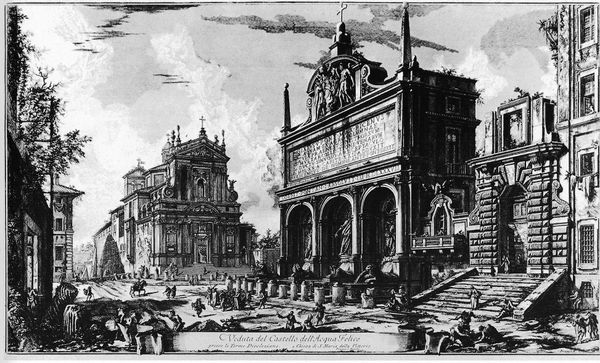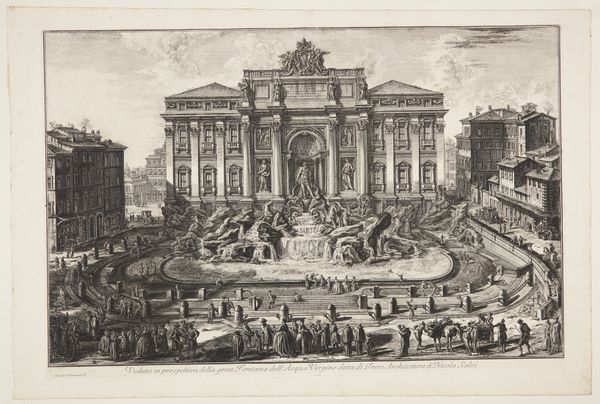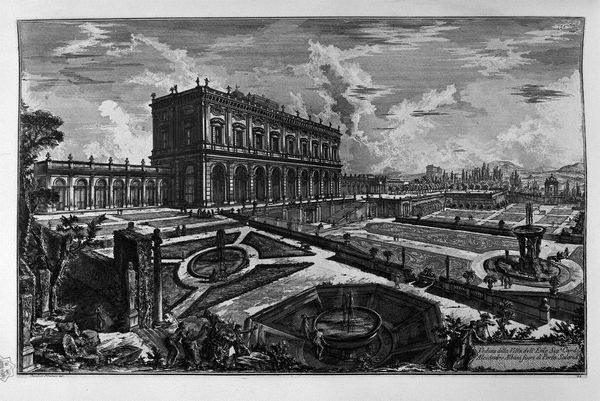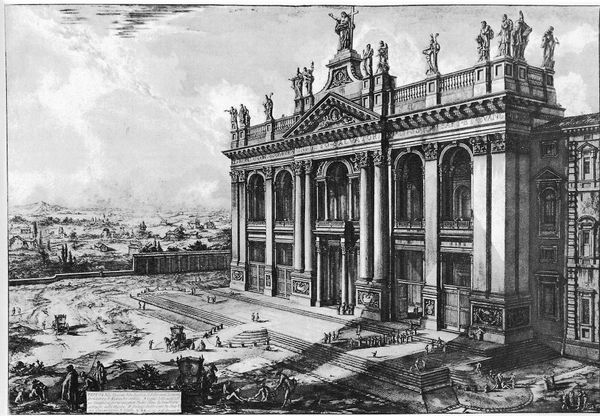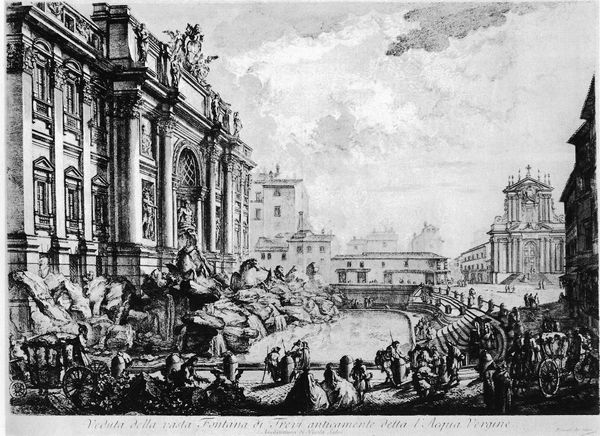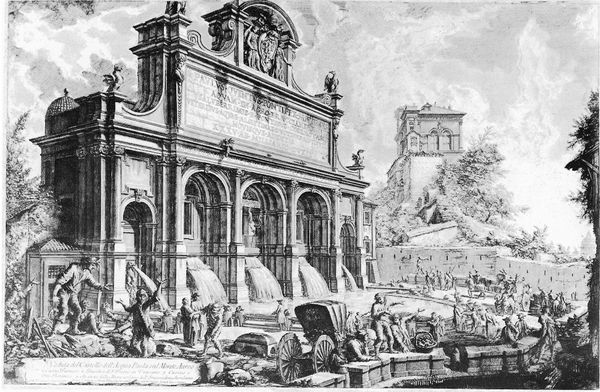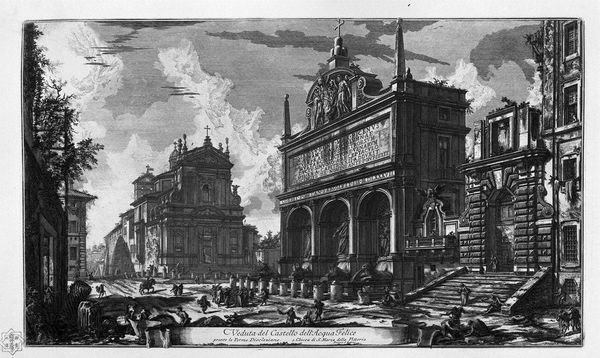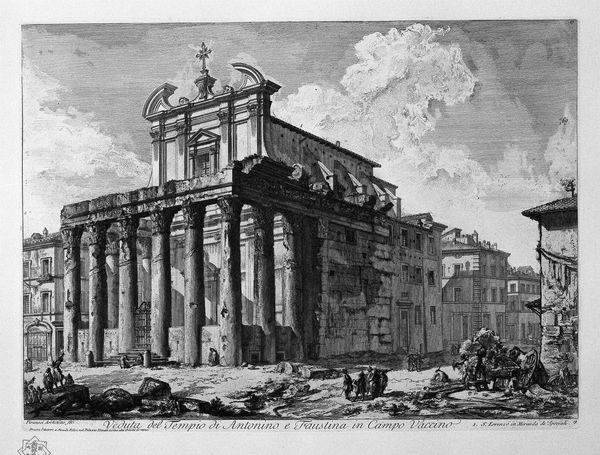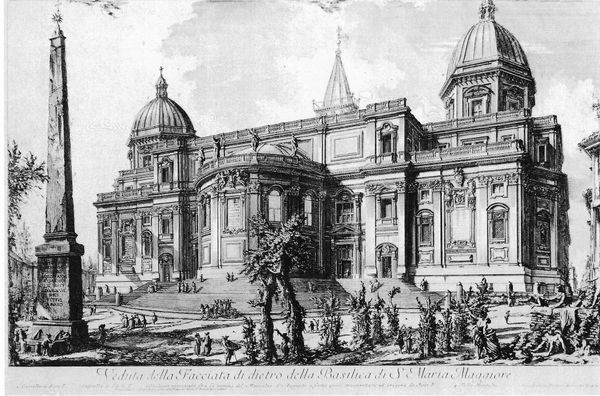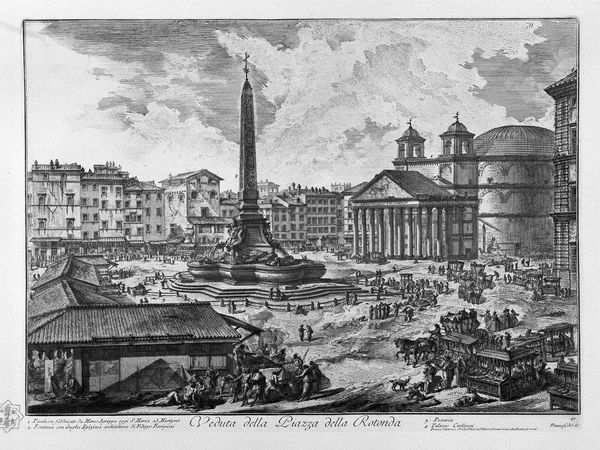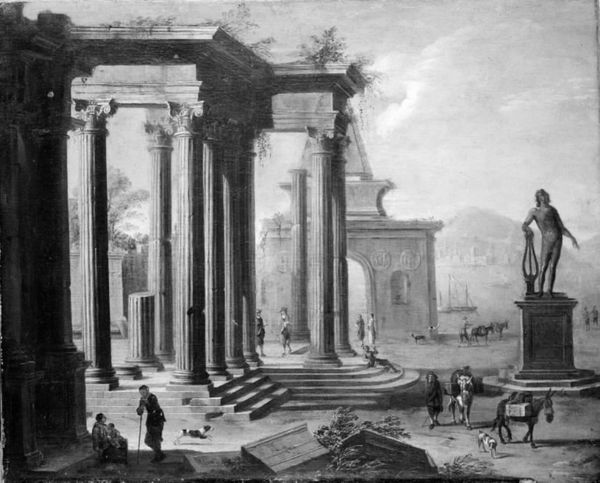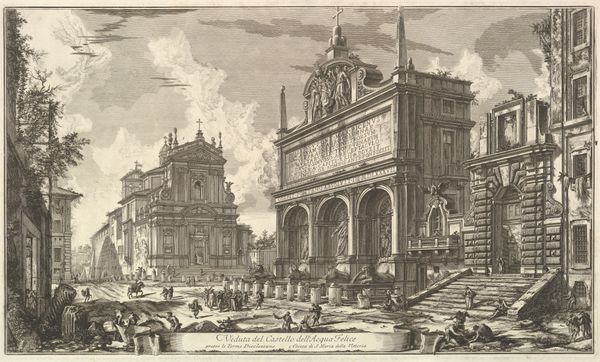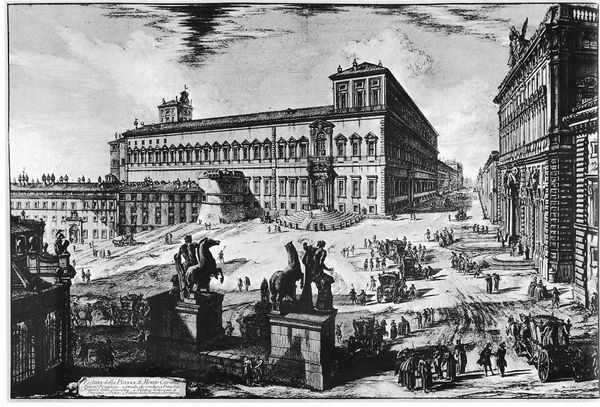
drawing, print, etching, ink, architecture
#
pen and ink
#
drawing
#
baroque
# print
#
etching
#
perspective
#
form
#
romanesque
#
ink
#
arch
#
line
#
pen work
#
cityscape
#
street
#
architecture
Copyright: Public domain
Giovanni Battista Piranesi’s engraving of the Trevi Fountain shows the Roman landmark rendered in ink on paper. This wasn't fine art, exactly. Piranesi was known for his detailed documentation of Roman architecture, and these prints were essentially a form of publishing. Notice the sharp contrast and intricate detail achieved through etching and engraving. The textures of stone, water, and the surrounding urban fabric are all meticulously captured. Piranesi uses line work to convey depth, light, and shadow, creating a dramatic and immersive experience. The print gives the impression of monumental scale. Prints like this were made using a division of labor. Piranesi would have prepared the original drawing, but many hands would have been involved in the chemical and mechanical processes required to produce the final image. These images were luxury goods that contributed to the economy of tourism. Ultimately, Piranesi's work collapses distinctions between documentation, artistic interpretation, and commercial enterprise. He shows us how the built environment is not just a physical reality, but also a cultural and economic product.
Comments
No comments
Be the first to comment and join the conversation on the ultimate creative platform.
